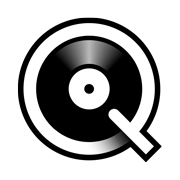
Musique illimitée
Écoutez cet album en haute-qualité dès maintenant dans nos applications
Démarrer ma période d'essai et lancer l'écoute de cet albumProfitez de cet album sur les apps Qobuz grâce à votre abonnement
SouscrireProfitez de cet album sur les apps Qobuz grâce à votre abonnement
Téléchargement digital
Téléchargez cet album dans la qualité de votre choix
Langue disponible : anglais
The arrangement of Johann Sebastian Bach's organ trio sonatas for other instruments has a long history, one of which Bach himself, a pioneer of the reuse-and-recycle ethic, would hardly have disapproved. Indeed, it's not even clear that these six three-movement compositions were written for the organ in the first place; they bore the cryptic designation "for two claviers and pedal," which may have indicated one of the now-forgotten pedal harpsichords of Bach's time. Too, Bach in transferring the trio sonata texture to a keyboard instrument was making solo music out of a genre usually associated with a small ensemble, and giving it back to a small ensemble would not seem a radical move. Nevertheless, this version by the Trio Lézard, German as they come despite the French name, is surprising. The unexpected quality comes from the specific trio of clarinet, English horn, and bassoon that is employed: it feels both familiar and unfamiliar at the same time. The familiarity comes from the consistent treatment of the top two parts in Bach's texture; the top line is transferred to the clarinet, and the second line to the English horn. The ingenuity in creating ornaments for modern woodwinds that convey a sense of Baroque ornamentation without sounding weird is considerable. What makes the music un-Bachian is the bassoon that takes the pedal line. Although the clarinet and the English horn did not exist in Bach's time, while the bassoon did, it is the bassoon that really snaps the texture into a bare transparency that Bach's original does not have -- the pedal of an organ can disguise a lot of dissonances that emerge into the glaring light of day here. The overall effect is intellectual and rather chilly; the booklet evokes the name of Schoenberg, and this arrangement resembles in spirit above all the Second Viennese School's experiments with Baroque counterpoint. You may like it or not, but you will certainly hear details of Bach's thinking that have eluded you in other recordings of these works, and the elasticity of Bach's music in accommodating speculative treatments is on especially intriguing display here. The Super Audio sound is wasted on engineering that fetishizes performer presence, including a big gasp at the beginning of each movement as everybody takes a breath.
© TiVo
Vous êtes actuellement en train d’écouter des extraits.
Écoutez plus de 100 millions de titres avec votre abonnement illimité.
Écoutez cette playlist et plus de 100 millions de titres avec votre abonnement illimité.
À partir de 12,49€/mois

Trio Lezard, Ensemble
2005 Mielke Bergfeld Musikproduktion KG 2005 Mielke Bergfeld Musikproduktion KG
Trio Lezard, Ensemble
2005 Mielke Bergfeld Musikproduktion KG 2005 Mielke Bergfeld Musikproduktion KG
Trio Lezard, Ensemble
2005 Mielke Bergfeld Musikproduktion KG 2005 Mielke Bergfeld Musikproduktion KG
Trio Lezard, Ensemble
2005 Mielke Bergfeld Musikproduktion KG 2005 Mielke Bergfeld Musikproduktion KG
Trio Lezard, Ensemble
2005 Mielke Bergfeld Musikproduktion KG 2005 Mielke Bergfeld Musikproduktion KG
Trio Lezard, Ensemble
2005 Mielke Bergfeld Musikproduktion KG 2005 Mielke Bergfeld Musikproduktion KG
Trio Lezard, Ensemble
2005 Mielke Bergfeld Musikproduktion KG 2005 Mielke Bergfeld Musikproduktion KG
Trio Lezard, Ensemble
2005 Mielke Bergfeld Musikproduktion KG 2005 Mielke Bergfeld Musikproduktion KG
Trio Lezard, Ensemble
2005 Mielke Bergfeld Musikproduktion KG 2005 Mielke Bergfeld Musikproduktion KG
Trio Lezard, Ensemble
2005 Mielke Bergfeld Musikproduktion KG 2005 Mielke Bergfeld Musikproduktion KG
Trio Lezard, Ensemble
2005 Mielke Bergfeld Musikproduktion KG 2005 Mielke Bergfeld Musikproduktion KG
Trio Lezard, Ensemble
2005 Mielke Bergfeld Musikproduktion KG 2005 Mielke Bergfeld Musikproduktion KG
Trio Lezard, Ensemble
2005 Mielke Bergfeld Musikproduktion KG 2005 Mielke Bergfeld Musikproduktion KG
Trio Lezard, Ensemble
2005 Mielke Bergfeld Musikproduktion KG 2005 Mielke Bergfeld Musikproduktion KG
Trio Lezard, Ensemble
2005 Mielke Bergfeld Musikproduktion KG 2005 Mielke Bergfeld Musikproduktion KG
Trio Lezard, Ensemble
2005 Mielke Bergfeld Musikproduktion KG 2005 Mielke Bergfeld Musikproduktion KG
Trio Lezard, Ensemble
2005 Mielke Bergfeld Musikproduktion KG 2005 Mielke Bergfeld Musikproduktion KG
Trio Lezard, Ensemble
2005 Mielke Bergfeld Musikproduktion KG 2005 Mielke Bergfeld Musikproduktion KG
Chronique
The arrangement of Johann Sebastian Bach's organ trio sonatas for other instruments has a long history, one of which Bach himself, a pioneer of the reuse-and-recycle ethic, would hardly have disapproved. Indeed, it's not even clear that these six three-movement compositions were written for the organ in the first place; they bore the cryptic designation "for two claviers and pedal," which may have indicated one of the now-forgotten pedal harpsichords of Bach's time. Too, Bach in transferring the trio sonata texture to a keyboard instrument was making solo music out of a genre usually associated with a small ensemble, and giving it back to a small ensemble would not seem a radical move. Nevertheless, this version by the Trio Lézard, German as they come despite the French name, is surprising. The unexpected quality comes from the specific trio of clarinet, English horn, and bassoon that is employed: it feels both familiar and unfamiliar at the same time. The familiarity comes from the consistent treatment of the top two parts in Bach's texture; the top line is transferred to the clarinet, and the second line to the English horn. The ingenuity in creating ornaments for modern woodwinds that convey a sense of Baroque ornamentation without sounding weird is considerable. What makes the music un-Bachian is the bassoon that takes the pedal line. Although the clarinet and the English horn did not exist in Bach's time, while the bassoon did, it is the bassoon that really snaps the texture into a bare transparency that Bach's original does not have -- the pedal of an organ can disguise a lot of dissonances that emerge into the glaring light of day here. The overall effect is intellectual and rather chilly; the booklet evokes the name of Schoenberg, and this arrangement resembles in spirit above all the Second Viennese School's experiments with Baroque counterpoint. You may like it or not, but you will certainly hear details of Bach's thinking that have eluded you in other recordings of these works, and the elasticity of Bach's music in accommodating speculative treatments is on especially intriguing display here. The Super Audio sound is wasted on engineering that fetishizes performer presence, including a big gasp at the beginning of each movement as everybody takes a breath.
© TiVo
À propos
- 1 disque(s) - 18 piste(s)
- Durée totale : 01:04:32
- Artistes principaux : Trio Lezard
- Compositeur : Johann Sebastian Bach
- Label : Coviello Classics
- Genre : Classique
2005 Mielke Bergfeld Musikproduktion KG 2005 Mielke Bergfeld Musikproduktion KG
Améliorer les informations de l'album
 Pourquoi acheter sur Qobuz ?
Pourquoi acheter sur Qobuz ?
-
Streamez ou téléchargez votre musique
Achetez un album ou une piste à l’unité. Ou écoutez tout notre catalogue en illimité avec nos abonnements de streaming en haute qualité.
-
Zéro DRM
Les fichiers téléchargés vous appartiennent, sans aucune limite d’utilisation. Vous pouvez les télécharger autant de fois que vous souhaitez.
-
Choisissez le format qui vous convient
Vous disposez d’un large choix de formats pour télécharger vos achats (FLAC, ALAC, WAV, AIFF...) en fonction de vos besoins.
-
Écoutez vos achats dans nos applications
Téléchargez les applications Qobuz pour smartphones, tablettes et ordinateurs, et écoutez vos achats partout avec vous.



